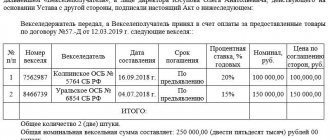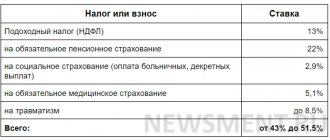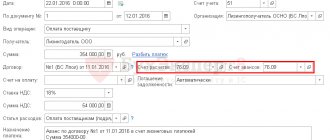Purposes of using accelerated depreciation rates
The main goal of UA is the accelerated distribution of asset value. In the future, increased accruals will be used to reimburse costs during the operation period. This helps stimulate the pace of development, as well as the correct distribution of spending on modernization. Contributions are not subject to tax payments.
Accelerated depreciation is used for those objects that wear out quickly. Accelerated obsolescence makes it necessary to use special coefficients.
Useful life of a vehicle for depreciation
For example, the accountant of almost every company that has purchased a car faces a dilemma: can the car be depreciated before registering it with the traffic police or not? Depreciation must be calculated starting from the month following the month in which the car was accepted for accounting as a fixed asset (clause 21 of PBU 6/01). In the future, depreciation should be charged monthly, regardless of the organization’s performance (clauses 19, 24 of PBU 6/01).
Forms of documents for accounting of fixed assets were approved by Resolution of the State Statistics Committee of Russia dated January 21, 2003 No. 7.
Vehicles have 4 groups - up to 7 years. Large and high class vehicles are included in category 5, they have a term of up to 10 years. For such cars, engine size is not important. Any passenger vehicle can belong to group 5 - there are no criteria for inclusion in legislative acts.
Types of odds
The types of coefficients are prescribed in Article 259.3 of the Tax Code of the Russian Federation. The act states that an entrepreneur can use coefficients from 1 to 3.
Factor up to two
A coefficient not exceeding 2 is relevant for the following objects:
- Operated in aggressive conditions or with extended shifts.
- They are the property of industrial entities operating in the field of agriculture.
- Are the property of resident companies of a special or free economic zone.
- Characterized by increased energy productivity.
- Manufactured on the basis of a special investment agreement.
For all of the above objects, a coefficient of 1-2 is relevant.
Factor up to three
A coefficient not exceeding 3 is relevant for these assets:
- Considered to be the subject of a finance lease agreement if the asset is on the balance sheet of the company determining depreciation. That is, this asset should not be the property of the entity that provided the lease.
- Applicable only within the framework of scientific and technical activities.
- Used as part of carbon extraction at a new deposit.
- Used in water supply and sanitation.
Article 259.3 of the Tax Code of the Russian Federation states that the same coefficient is used for funds from homogeneous groups. Objects are subject to the application of the same coefficient even when they are subject to accelerated depreciation according to several criteria.
IMPORTANT! A coefficient not higher than three can only be used if depreciation is calculated using the reducing balance method. The relevant rules are contained in paragraph 19 of PBU 6/01, paragraph 29 of PBU 14/2007.
What are the advantages of this method?
The main advantage of this method is the reduction of the tax base and tax payments.
This depreciation makes it possible to lower the tax base, reduce income tax and receive a VAT refund, which is included in leasing payments.
The main thing for the lessor is that the person leasing the property will pay the lease payments on the agreed date under the contract. It should be noted here that in some cases the leasing terms are very long and extend over decades.
During the use of the property, the lessor will be able to receive very large sums. Sometimes taxes for the use of fixed assets are paid by the lessor himself. Therefore, using this type of depreciation is very profitable.
Taxes can be assessed in various ways. You need to get acquainted with all the nuances in advance. Payment of taxes to the tax office must be strictly on time, otherwise you cannot avoid serious fines, especially for legal entities. You can't make mistakes when calculating taxes.
The benefits of accelerated depreciation can be seen even for the state. The main thing is to increase the mass of the tax base, even taking into account accelerated depreciation, which reduces taxes.
But only one party to the leasing contract will have the right to receive leasing acceleration. A car purchased by a lessee can be displayed on the balance sheet of the lessor's company or on the balance sheet of the lessee's company. An organization with transport on its balance sheet will receive benefits.
Only legal entities will be able to use accelerated depreciation.
Features of calculating accelerated depreciation
To determine the amount of deductions for depreciation, you need this formula:
Ar = Og / SPI x K.
The formula uses these values:
- Ag is the amount of annual depreciation deductions.
- Og – the residual value of the asset at the beginning of the reporting year.
- SPI is the period of useful operation of the asset in years.
- K is the desired acceleration coefficient.
This formula is relevant for calculating annual deductions. However, you can also determine monthly deductions. The following formula is used for this:
Am = Ohm / SPIO x K.
The formula uses these values:
- Am – the amount of monthly deductions for depreciation.
- SPIO – remaining useful life period at the beginning of the month.
- Om – residual value at the beginning of the month.
Typically, an accountant calculates depreciation for the year.
Depreciation of a leased car
For example, a company purchased a car of the third depreciation group, which was in operation for 4.5 years. For this category of car, the period of effective use cannot exceed 5 years.
The article will discuss vehicle depreciation. What kind of procedure is this, why is it necessary, and how is it carried out - further. The full cost of the purchased vehicle is not written off immediately.
- General information
- Emerging nuances
It is deducted gradually over its useful life. Depreciation is calculated both in tax and accounting. It is important to have an idea of how to properly implement depreciation.
General information ↑
Depreciation of a car is carried out in order to write off its value in parts when they have worn out. It is considered if the organization purchased a vehicle or an employee was hired with his own transport.
When calculating depreciation, you must follow the rules:
| The organization independently chooses the method | It must be indicated in the accounting policy |
| The method that was chosen | Used throughout the entire useful life of the object |
| Payments are made every month | In the amount of 1/12 of the total amount for the year |
| Accrual starts from month | Which follows after the vehicle has been put into operation |
| If the object is completely depreciated | There is no need to charge depreciation on it (if the car continues to be used, it is simply written off from the organization’s balance sheet) |
| Accrual is displayed | For loan 02 |
It is necessary to determine the service life of vehicles before full depreciation is calculated.
There are several calculation methods:
- linear;
- reducing balance;
- write-off in proportion to the volume of work performed;
- accelerated method.
The use of the straight-line depreciation method during leasing is limited to only 1–3 groups. For other finance lease items, as a rule, accelerated write-off methods with increasing coefficients are used. In most cases, both parties to the contract are interested in this.
To ensure accurate calculations, you can record all expenses in a notebook. In tax accounting, the amount of accrued depreciation on a vehicle is included in indirect expenses.
When accelerated depreciation becomes beneficial to a company
When a company decides to buy or manufacture an operating system, it must determine a method for writing off the funds spent. The method of accelerating depreciation is relevant if there is a need to write off the cost of objects as quickly as possible.
For example, the basic potential of an asset is applied by an entrepreneur in the first years of acceptance for accounting. Such an asset could be office equipment. PCs, laptops and other machines are rapidly decreasing in value, although the technical characteristics of the objects remain the same. Accelerated depreciation helps write off expenses associated with the purchase or production of an asset, taking into account the load on non-current assets.
FOR YOUR INFORMATION! Accelerated depreciation is one of the advantages of financing under a leasing contract.
How to apply an increasing depreciation rate for leased property: accounting
Why is the Ministry of Finance against accelerated depreciation in accounting?
In accordance with Article 31 of Federal Law No. 164-FZ dated October 29, 1998 “On financial lease (leasing),” depreciation deductions are made by the party to the leasing agreement on whose balance sheet the leased asset is located (hereinafter referred to as the balance holder of the leased asset).
It is established that the parties to the leasing agreement have the right, by mutual agreement, to apply accelerated depreciation of the leased asset. It would seem that this norm allows the holder of the balance sheet of the leased asset to apply accelerated depreciation in accounting by analogy with tax accounting. That is, use any method of depreciation and an increasing factor not higher than 3. The same conclusion follows from the provisions of the Directive on the reflection in accounting of transactions under a leasing agreement (approved by order of the Ministry of Finance of Russia dated February 17, 1997 No. 15). Thus, in paragraph 9 of the Instructions devoted to the accounting of leasing operations with the lessee, the following is stated: “accrual of depreciation charges for the full restoration of leased property is carried out based on its cost and norms approved in the prescribed manner, or the specified norms increased in connection with the use of the accelerated mechanism depreciation by a factor not exceeding 3.”
However, the Russian Ministry of Finance has taken a completely different position on this issue for many years. Here is a quote from the letter of the Ministry of Finance dated 03.03.05 No. 03-06-01-04/125, reflecting the opinion of officials: “Clause 19 of PBU 6/01, as well as paragraph 54 of the Methodological Guidelines for Accounting for Fixed Assets*, it is determined that, according to the legislation of the Russian Federation For movable property that constitutes the object of financial leasing and is classified as the active part of fixed assets, an acceleration factor may be applied in accordance with the terms of the financial lease agreement of no higher than 3, when calculating depreciation charges using the reducing balance method. The use of the acceleration coefficient when calculating depreciation charges using the linear method of PBU 6/01 is not provided for.”
As we see, the financial department in this letter uses the non-existent term “financial leasing”, and, for unknown reasons, recognizes the use of accelerated depreciation only in relation to movable property classified as an unknown “active part of fixed assets”. But, most importantly, it is surprising that officials make the use of accelerated depreciation of the leased asset dependent on the method of calculating depreciation. Namely: they consider it legal to use accelerated depreciation only when using the reducing balance method. Since the use of this method is extremely labor-intensive and leads to significant deviations in depreciation accounting from tax accounting, balance holders (primarily lessees) very often do not risk using accelerated depreciation of leased property in accounting. After all, guided by the position of the Ministry of Finance, tax authorities may accuse the company of understating property taxes in relation to the leased asset, for which accelerated accounting depreciation was applied.
How to defend the right to accelerated depreciation in accounting
However, in the opinion of the author of this article, one can argue with the position of the Ministry of Finance. Next, two options are proposed for asserting the right to accrue accelerated depreciation of the leased asset in accounting. They are suitable when using any, but above all, the linear method of calculating depreciation.
Option No. 1. Suitable for lessees
This option was suggested by the Russian Ministry of Finance in a letter dated 05.05.03 No. 16-00-14/150. Officials decided that the Accounting Regulations “Accounting for Fixed Assets” PBU 6/01 (approved by Order of the Ministry of Finance of Russia dated March 30, 2001 No. 26n) stipulate that the asset is recognized as an asset of the fixed assets of the organization that has the right of ownership to it. In accordance with the Law “On Financial Lease (Leasing)”, the leased asset transferred to the lessee for temporary possession and use is the property of the lessor. Therefore, according to the letter from the Ministry of Finance, PBU 6/01 does not apply to lessees.
Following this logic of officials, we can come to the conclusion that other restrictions on accounting of fixed assets do not apply to lessees. In particular, there is a restriction on the choice of method for calculating accelerated depreciation of the leased asset. In other words, if PBU 6/01 does not apply to lessees, then they have the right to charge depreciation of the leased asset recorded on the balance sheet in any way, including linear, and apply an increasing factor.
I would like to note that the Ministry of Finance did not give any reasons for its opinion that PBU 6/01 does not apply to leased property accounted for by the lessee. The fact is that PBU 6/01 does not contain such a condition for registering a fixed asset as acquiring ownership of it. At the same time, there are all the conditions provided for in paragraph 4 of PBU 6/01 for recognizing the leased asset, recorded on the balance sheet of the lessee, as an object of fixed assets.
Thus, this option of asserting the right of the lessee to calculate depreciation of the leased asset in accounting using the linear method and an increasing coefficient, although it has the right to life, is still not optimal.
Option No. 2. Suitable for both lessors and lessees
This option is based on the following thesis: the use by the balance holder of the leased asset of accelerated accounting depreciation for such property when using any depreciation method is directly provided for by the legislation of the Russian Federation on accounting. This is explained as follows.
In accordance with Article 3 of the Federal Law of November 21, 1996 No. 129-FZ “On Accounting”, the legislation of the Russian Federation on accounting consists of this law, which establishes a uniform legal and methodological basis for organizing and maintaining accounting in the Russian Federation, other federal laws, and Presidential decrees of the Russian Federation and resolutions of the Government of the Russian Federation.
As mentioned above, on the basis of paragraph 1 of Article 31 of the Law “On Financial Lease (Leasing)” (which in this part can be classified as acts of legislation on accounting), the parties to the leasing agreement have the right, by mutual agreement, to apply accelerated depreciation of the leased asset. This rule does not establish a relationship between the ability of the balance holder of the leased property to apply accelerated depreciation of the leased asset and the method of depreciation of the specified property.
Provisions of regulatory acts that contradict accounting legislation are not subject to application. In our case, the Law “On Financial Lease (Leasing)” is a regulatory act of a higher level than the orders of the Ministry of Finance. Thus, the balance holder of the leased property has the right to apply, by agreement of the parties to the leasing agreement, an increasing coefficient to the basic depreciation rate when using any depreciation method. In this case, it no longer matters that, in the opinion of the Ministry of Finance, PBU 6/01 does not provide for the possibility of using an increasing coefficient for the straight-line depreciation method.
There is another argument in favor of this option. Paragraph 3 of Article 31 of the Law “On Financial Lease (Leasing)” as amended in force until February 2002 stated that when accelerated depreciation is applied, a uniform (linear) method of calculation is used, in which the depreciation rate approved in the established manner increases by acceleration factor of no more than 3. However, Federal Law No. 10-FZ dated January 29, 2002 (hereinafter referred to as Law No. 10-FZ) excluded from the Law “On Financial Lease (Leasing)” the mention that when applying accelerated depreciation, linear accrual method.
In the explanatory note to the draft Law No. 10-FZ o. Thus, the will of the legislator is clearly visible from the explanatory note, which is examined by the courts when interpreting unclear norms of the law. In this case, the will of the legislator is to grant the balance holder of the leased asset the right to apply an increasing coefficient when using any method of depreciation provided for by the accounting legislation, including the straight-line method.
What coefficient can be used
Let’s assume that the balance holder of the leased asset, despite the position of the Ministry of Finance, decided to use accelerated depreciation in accounting. The question arises: what increasing factor can be used in this case? In accordance with paragraph 54 of the Methodological Instructions for Accounting of Fixed Assets, as well as paragraph 9 of the Instructions on the reflection in accounting of transactions under a leasing agreement, an increasing factor is applied in an amount of no more than 3.
But at the same time, the Law “On Financial Lease (Leasing)” does not provide for restrictions on the size of the increasing coefficient. Based on this, we can conclude: the balance holder of the leased asset has grounds to apply an increasing factor higher than 3. In the event of a dispute with the tax authorities, the taxpayer can refer to the contradiction between the specified regulations of the Ministry of Finance of Russia and the Law “On Financial Lease (Leasing)”, which can be attributed to the legislation of the Russian Federation on accounting.
However, in the opinion of the author of the article, the outcome of such a trial with a very high degree of probability will be in favor of the tax authority. After all, the massive use by balance holders of leased property of an increasing coefficient above 3 will lead to a decrease in budget revenues in terms of property taxes.
Increasing coefficient and leasing agreement
Is it necessary to record the fact of using an increasing depreciation rate and its size in the leasing agreement? To answer this question, let us turn to the provisions of the Law “On Financial Lease (Leasing)”. In accordance with paragraph 1 of Article 31 of this Law, the parties to the leasing agreement, by mutual agreement, have the right to apply accelerated depreciation of the leased asset. Since the leasing agreement is concluded exclusively in writing (clause 1 of Article 15 of the Law), any agreement of the parties within the framework of such an agreement must also be drawn up in writing. Thus, the condition on the application by the balance holder of the leased asset of the accelerated depreciation coefficient, as well as the size of this coefficient (even if this size is defined by the phrase “no more than such and such a number”) must be fixed in the leasing agreement or in an additional agreement to it (resolution of the Federal Antimonopoly Service of the Ural district dated December 28, 2009 in case No. A71-4088/2008-A28).
Increasing factor and accounting policy
Is it possible to use accelerated accounting depreciation of a leased asset if such a possibility is not specified in the accounting policy? Let me remind you that the accounting policy of an organization is understood as a set of accounting methods - primary observation, cost measurement, current grouping and final generalization of the facts of economic activity. Methods of maintaining accounting include, among other things, methods of repaying the value of assets (clause 2 of the Accounting Regulations “Accounting Policy of the Organization” PBU 1/2008, approved by order of the Ministry of Finance of Russia dated October 6, 2008 No. 106n).
Since the use of an accelerated depreciation coefficient for the leased asset is a choice of a method for repaying the cost of the asset - the leased asset, this means that the use of an increasing coefficient and its size (the procedure for determining the size) must be recorded in the accounting policy of the balance sheet holder of the leased asset for accounting purposes. If there is no such record, there is a high probability that in the event of a trial, victory will be on the side of the tax authorities (see, for example, the resolution of the Federal Antimonopoly Service of the Volga-Vyatka District dated 06/03/10 in case No. A29-9910/2009).
To be fair, I note that there is an example of a dispute won by the lessee on the issue under consideration. The company convinced the judges that it was right, despite the fact that the accounting policy for accounting purposes did not record the fact of using an increasing depreciation rate for leased property and its size (resolution of the Federal Antimonopoly Service of the Ural District dated December 28, 2009 in case No. A71-4088/2008- A28).
Who is this alternative suitable for?
To avoid disputes with tax authorities, some experts suggest using the straight-line depreciation method, but without a multiplying factor. Let's consider whether this method can be used in all situations.
In accordance with paragraph 59 of the Guidelines for the accounting of fixed assets, the useful life of the fixed assets is determined when the object is accepted for accounting. This period is set, inter alia, on the basis of regulatory and other restrictions on the use of the object (for example, the rental period). Thus, the balance holder is asked to establish a useful life for the leased asset based on the term of the leasing agreement. In this situation, the balance sheet holder can, using the linear depreciation method without an increasing factor, increase the amount of depreciation of this property in accounting.
However, this proposal is valid for the lessor only if, under the leasing agreement, the property at the end of the contract term is transferred into the ownership of the lessee; and for the lessee - in the case when the leased asset is recorded on the lessee’s balance sheet, and at the end of the contract is returned to the lessor (a rare case).
If the leased item is taken into account on the balance sheet of the lessee and, under the terms of the leasing agreement, the property becomes the property of the lessee (including on the basis of a separate purchase and sale agreement or after payment of the redemption price), then it cannot be said that for the lessee the useful life of the item leasing is limited by the term of the leasing agreement. After all, even after the expiration of the leasing agreement, the lessee continues to use the property, but already under the right of ownership. I note that this is precisely the approach that tax authorities and judges adhere to in disputes (resolutions of the FAS Volga-Vyatka District dated 06/03/10 in case No. A29-9910/2009, FAS Ural District dated 12/10/07 No. F09-10017/07-S3 in case No. A76-5275/07). Thus, in the situation under consideration, in my opinion, the lessee has no right to accept the term of the leasing agreement as the useful life of the leased asset.
*Approved by order of the Ministry of Finance of Russia dated October 13, 2003 No. 91n.
Accelerated depreciation when leasing
Accelerated depreciation on the leased asset provides these advantages:
- Reduced property tax on the leased item.
- Reduced income tax during the leasing contract.
- A chance to buy out the leased asset upon completion of the transaction at a minimum residual value.
Accelerated depreciation allows a company to reap a number of benefits. However, it is important to determine its size correctly.
AU in relation to leased items is regulated by Federal Law No. 164 “On Leasing” dated October 29, 1998 and subparagraph 1 of paragraph 2 of Article 259.3 of the Tax Code of the Russian Federation. These regulations give the accountant the right to apply accelerated depreciation under a leasing agreement.
However, certain limitations must be taken into account. In particular, coefficients are not used for assets of 1-3 depreciation groups. These groups include objects whose useful life is 1-5 years.
On reducing income tax during the period of a leasing transaction
Accelerated depreciation will make it possible to lower the tax base, lowering the income tax by increasing the amount of depreciation of the leased property. This effect is achieved during the operation of the leasing operation.
But there is no need to count on savings, since the initial price of the leased or purchased object is equal to the entire amount of costs associated with calculating the depreciation of the object, it will also be the same as with the accelerated method, as with the ordinary calculation of depreciation.
It differs in that with accelerated calculation it will be faster. Following the completion of the leasing contract, during the write-off of the leased asset without balance, depreciation is not included in expenses. In the usual calculation of depreciation of objects, depreciation will be charged, reducing the tax base for profits.
To use the accelerated depreciation method, you need to check the entire amount of costs and take into account the revenue from the operation of the enterprise. High depreciation data retained on leases multiply expenses, leading to loss of profit during the recalculation of accelerated depreciation (mainly for the acquisition of an expensive building).
To calculate income tax, depreciation is placed in the company's expense line. Therefore, the greater the depreciation, the lower the profit that remains to be paid.
But in order to accrue profit, you need to take into account that the write-off of the price of objects is taken for the entire period of its application. When calculating depreciation using an accelerated coefficient, the entire amount is taken. Therefore, it is written off more quickly and income tax is reduced more in the first years of purchasing the property. Therefore, the benefit is closely related to time. It would be optimal to reduce payments this year than in the future.
Calculation of the amount of accelerated depreciation
When using increasing accrual values, you need to multiply the depreciation rate by the increasing factor.
Consider the depreciation acceleration formula:
AMu = AM * KUA.
The formula uses these values:
- AMu is the norm of UA.
- AM is the depreciation rate determined based on the useful life of the assets.
- AMC – UA coefficient from 1 to 3.
It is not necessary to take whole numbers of coefficients (1,2,3). When calculating accelerated depreciation, you can use factors such as 1.5 or, for example, 1.63.
Calculation of accelerated depreciation using an example
Equipment is purchased under a leasing contract. Its initial cost is 1 million rubles excluding VAT. The equipment belongs to the 4th depreciation group. That is, its useful life is 5-7 years. The term of the leasing contract is 36 months.
First you need to find the coefficient by which you can write off the equipment for the leasing period. It is assumed that the write-off must be complete. The balance holder of the equipment set its useful life at 6 years. This means that the monthly depreciation rate without taking into account factors is equal to 1.389%.
The parties to the contract decided that a factor of 2 would be used. That is, the monthly depreciation deductions would be equal to 2.778%. The equipment will be fully depreciated within 3 years, which means the coefficient has been chosen correctly.
Let's change the conditions of the problem. The useful life is 80 months. The monthly depreciation rate will be 1.25%. The depreciation rate using AMC is 2.775%. The coefficient will be 2.22.
How is the leased asset purchased at the minimum residual value?
After the contract expires, the building can be written off. In particular, a taxable object of the 5th depreciation group with an operation stage of 10 years, to which an accelerating factor was applied, can be written off after 3 years. After the end of this period, the price of the property will be zero or a minimum price of 1000 rubles. This will be reflected on the lease recipient's balance sheet.
After this, leasing payments will be repaid and the cost of movable property will be paid, the company acquires the right to its property. After which it can resell the car to third parties at a loss. The company's balance sheet will show the price of the property, taking into account quick leasing.
Car leasing has been used in European countries for a long time. A method to quickly purchase the necessary car when the company does not have the required amount of money and does not want to take out a car loan. In Russia, this method has begun to gain popularity in recent years.
Companies that know the structure of leasing and its advantages constantly use this service. It is very important to extract greater benefits from this monetary transaction if you choose the right company. Lessees almost always prioritize the depreciation of fixed assets. This definition does not differ from the technical term, therefore most motorists do not have information about the significance of accelerated depreciation and do not have information about its results.
Restrictions on the use of the coefficient
There are certain restrictions on the use of AMC. The use of the coefficient must be justified. These conditions may be justified:
- The asset is in direct contact with aggressive environments. That is, the latter must destroy the object and affect its useful life.
- The asset comes into contact with toxic, explosive and other aggressive elements. They can lead to an emergency and rapid breakdown of equipment.
If there is simply an aggressive environment at the enterprise, but it does not affect the equipment in any way, the coefficient cannot be used.
Features of application in Russian tax accounting
For tax calculations in Russia, increased coefficients with restrictions can be applied if one of the conditions is met:
Taxation of an organization
- operation of fixed assets in aggressive environments (being near explosive or toxic substances, cold conditions in the Far North)
- application of OS in scientific and technical projects and developments
- for offshore mining
- activities in the field of agricultural production
- functioning of SPD in the recreational area
The use of accelerated methods must be stipulated in the accounting policy of the enterprise. The enterprise must have documents confirming compliance with the required conditions.
Odds
The acceleration rate is a statutory fixed rate used to calculate the accelerated depreciation of fixed assets when a company has a basis.
This indicator varied from 2 to 3.
Using this indicator, the manufacturer includes the cost of depreciation of the operating system in the final price of the product, taking into account the multiplication by this indicator.
At the end, these amounts are reflected in the final cost of production in the direction of growth, which helps to compensate for equipment costs and reduce the amount of tax payments.
Factors that increase the value of depreciation write-offs used on this basis can be a maximum of:
- 1.2 in the case of buildings and structures used in deteriorated conditions;
- 1.4 in the case of buildings and structures used in poor conditions and the above-mentioned devices and vehicles;
- 2.0 for machines and equipment of groups 4-6.
What is important is that the coefficient applied by the entrepreneur should not reach the maximum amount specified in the regulations. However, it is worth remembering that choosing the highest possible ratio leads to the maximum reduction in the depreciation period.
Essence and concept
Accelerated depreciation is based on the principles of straight-line A. This means that all write-offs are equal, but their value is higher than in the case of straight-line depreciation. Fixed assets are calculated in a shorter period of time.
The essence of accelerated depreciation is as follows: entrepreneurs can shorten period A by applying increased rates. Of course, this is only possible after certain requirements are met, such as the use of fixed assets in conditions that indicate rapid consumption or in which rapid technological progress is observed.
It is preferable to use increased depreciation rates for buildings, vehicles and equipment subject to increased wear and tear. The legislation contains detailed instructions regarding the possibility of applying higher standards A.
Accelerated depreciation increases the amount of write-offs from fixed assets, while reducing the term A and the amount of taxes.
Calculation formula and application restrictions
According to Art.
259 of the Tax Code of the Russian Federation, for accelerated depreciation it is allowed to use a coefficient of 2 or 3. Article navigation
- Depreciation acceleration factor
- In what cases is coefficient 2 applied?
- Application of coefficient 3
- Purposes of accelerated depreciation
- Features of application
- Limitations on the use of the multiplying factor
Depreciation refers to the transfer of funds from products sold or manufactured to the restoration of equipment that wears out over time. It gets old and deteriorates, so it needs repairs or modernization. The same applies to structures, machinery and other objects to which depreciation of fixed assets is applicable.
Money for repairs, modernization and purchase of new equipment is deducted from the profit for the manufactured product. All cash flows retained for the purpose of further work with equipment are classified as depreciation.
To calculate the percentage that needs to be set aside for OS repairs and replacements, you need to draw up a plan for a certain period. It depends on the technical features of production facilities. It includes periodic repair work and the period after which you will need to buy new equipment. The depreciation rate is calculated at the percentage necessary to reimburse the costs of equipment that wears out during the allotted period of operation.







